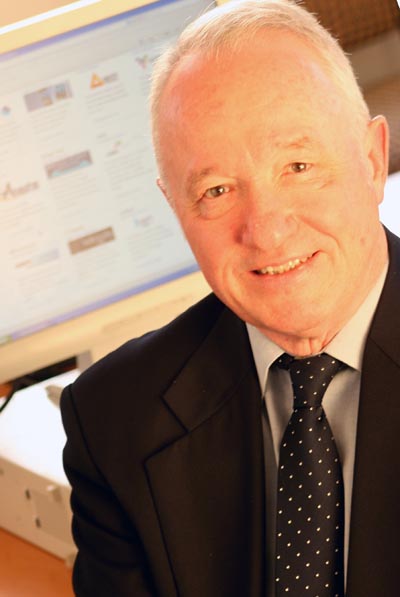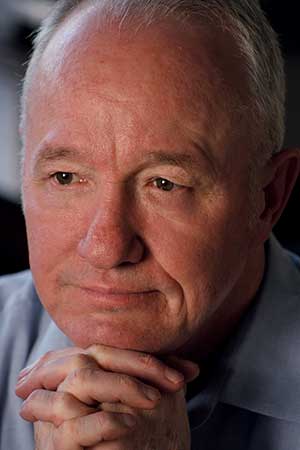Digital Business insights: Here is the news?
ACCORDING to Wikipedia, news is the communication of selected information on current events – information about things that are new.
Before newspapers, people used to tell each other what was new. Stories would come in from the next village through traders, travellers and officials.
Governments used couriers and proclamations to inform people about policy and the 'big' stories – “King Blod the impaler has been defeated and impaled”, “Corn taxes due next month – get them in or else”, “The Queen has died, long live the Queen” and so on. 
In the 17th century, official government broadsheets were issued. As interaction between communities grew, so did the need for information. From hand written newsletters evolved printed newspapers, which is what we still have today. And they are all now failing because of the internet.
They can’t compete.
News media is supposed to deliver news.
The issue of whether the “who, what, when, where and why” news information provided is objective, comprehensive, without bias, apolitical, neutral or otherwise is interesting.
In Australia, we have very few publishers of news, and one publisher especially, promotes the views of the owner through its columnists and editorial pieces.
This gives the owner huge influence with politicians and advertisers, but in a digital age, where individuals now have many other sources of information and can also discuss issues with networks of peers, the owner’s power diminishes day by day, except in the minds of politicians, the owner and those who work in his media outlets.
But it doesn’t change the fact that most newspapers and news channels today don’t provide a lot of news, they provide PR releases, opinion pieces and in many cases obvious propaganda.
Objectivity and trust increasingly sits only with national broadcasters such as the ABC and the BBC, plus CNN and Al Jazeera and groups of individuals that we each select as people who know – those who can give us access to the inside story.
In print, the Christian Science Monitor, New York Times, The Guardian and Washington Post ride high on trust.
Reporters have little time, resources or support to look into issues in any depth. Gone are the days of newspaper crusades against corruption, crime and fraud.
This is now largely left to “whistleblowers” – individuals who pay dearly for their bravery and social conscience.
Real news today comes from where it originally came, from informed personal networks enabled by the internet, and supported surprisingly still … by books.
Those rectangular, tactile, analogue objects that allow subjects, issues and ideas to be studied in considerable and considered depth.
The internet has taken us back to the beginning, back to the village, but the village now is global.
In the last century, Marshall McLuhan coined the term 'Global Village', but that village has now become real.
The new informed, personal information networks can inform swiftly and with insight.
Increasingly these global, personal networks are replacing or supplementing the traditional news channels. In effect, people are constructing their own news networks, individual by individual, with every person being a 'reporter'.
It used to happen in the pub, the grocer, in the market or outside the church in every village. Now it happens internationally in internet powered online communities, both private and public such as Linkedin.
Can newspapers compete with this? No.
They will continue to decline and ultimately go the way of the dinosaurs. No matter what they do with paywalls.
They are not smart or agile enough in their current form to provide what people really want. And they can’t compete on price, immediacy and quality of knowledge or insight with the global village, other than to be the new village idiot.
The giant tree falls. Nature abhors a vacuum. Into the gap abdicated by the mass media rushes a host of alternatives competing for the space.
The basic issue hasn’t changed. People want information about the new – for reasons of curiosity, for competitive edge, for personal advantage, for personal improvement. For whatever.
Being able to access new information at the speed of light creates new opportunities and new challenges.
In a global village, who makes the new rules? Nobody can.
Governments already agree about very little and there is no common view on freedom of information.
Dictatorships try to block information access and sharing in whatever ways they can.
Democracies can do little about it, other than to track, record and store as much communication and information traffic as they can.
And national sovereignty now largely sits in the pockets of the multinationals.
People since time began have recognised the power of media control – the storyteller and the story.
Dictators, kings and emperors tried to control the news and access to information.
Media barons after them tried to do the same thing.
The power has swung back to informed individuals, in the global village pubs, grocers and clubs on the internet – the forums, blogs and enewsletters.
But only because of the real authority and trust connected to the commentary.
Who do we trust? We trust firefighters, paramedics, nurses, pilots, doctors, pharmacists – those who demonstrate a shared value, social role.
Who don’t we trust? We don’t trust politicians, used car salesmen, real estate agents, journalists or talkback radio hosts. Surprise, surprise.
In the global village the news and information role has largely shifted to friends, acquaintances, bloggers and personal information networks.
Individuals are building their personal networks day by day. Some are better than others. It is clear even on Linkedin that some groups are more knowledgeable and informed.
How these networks evolve is fascinating to watch. Some are highly active, attractive, knowledgeable and valuable. Others less so.
The new global village networks will continue to grow.
So here is the new news.
It’s still there. But it is now coming from the global village at a button near you.
- John Sheridan, July 2014.
*
John Sheridan is CEO of Digital Business insights, an organisation based in Brisbane, Australia, which focuses on helping businesses and communities adapt to, and flourish in, the new digital world. He is the author of Connecting the Dots and getting more out of the digital revolution. Digital Business insights has been researching and analysing the digital revolution for more than 12 years and has surveyed more than 50,000 businesses, conducting in-depth case study analysis on more than 350 organisations and digital entrepreneurs.
ends




